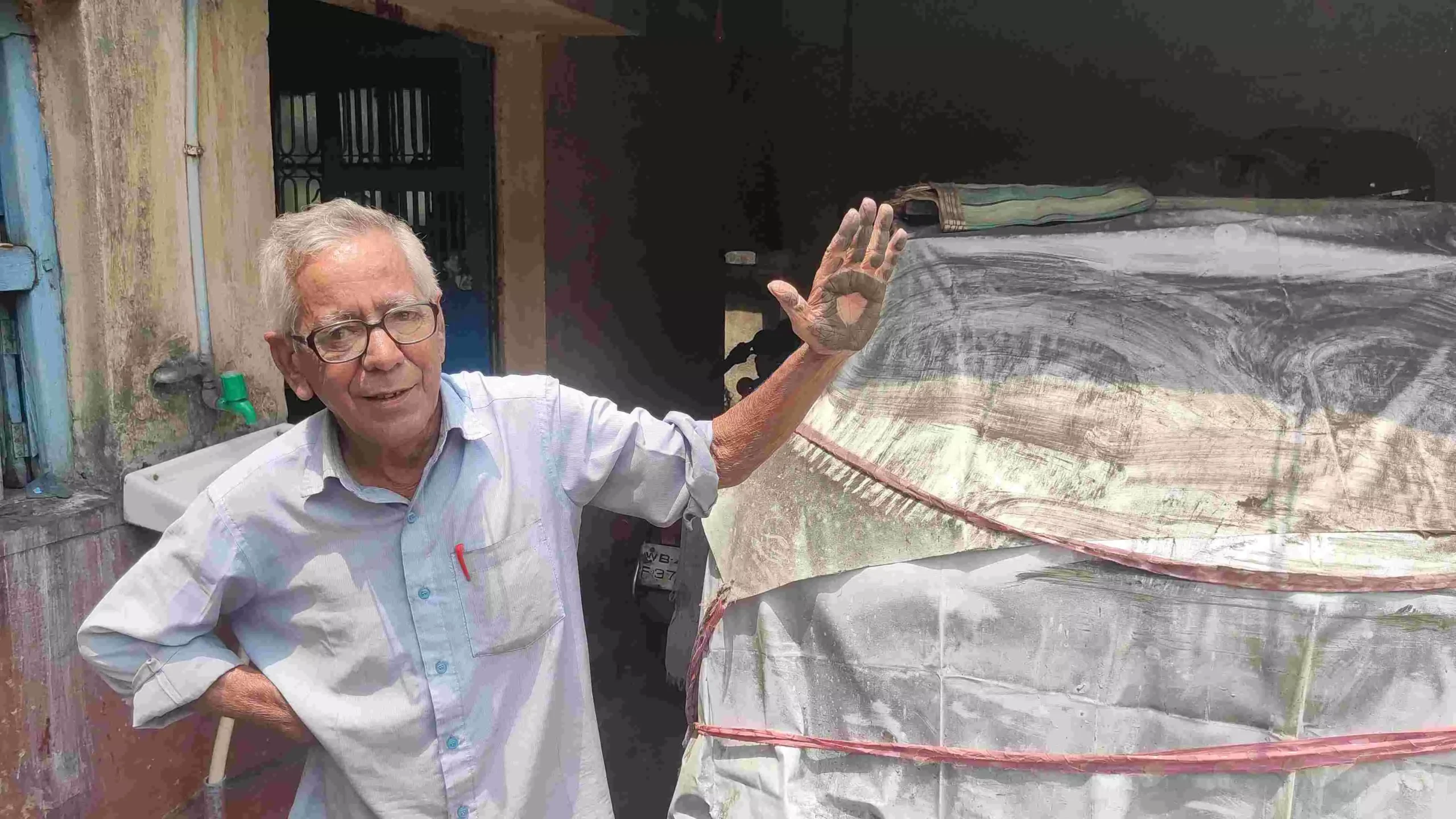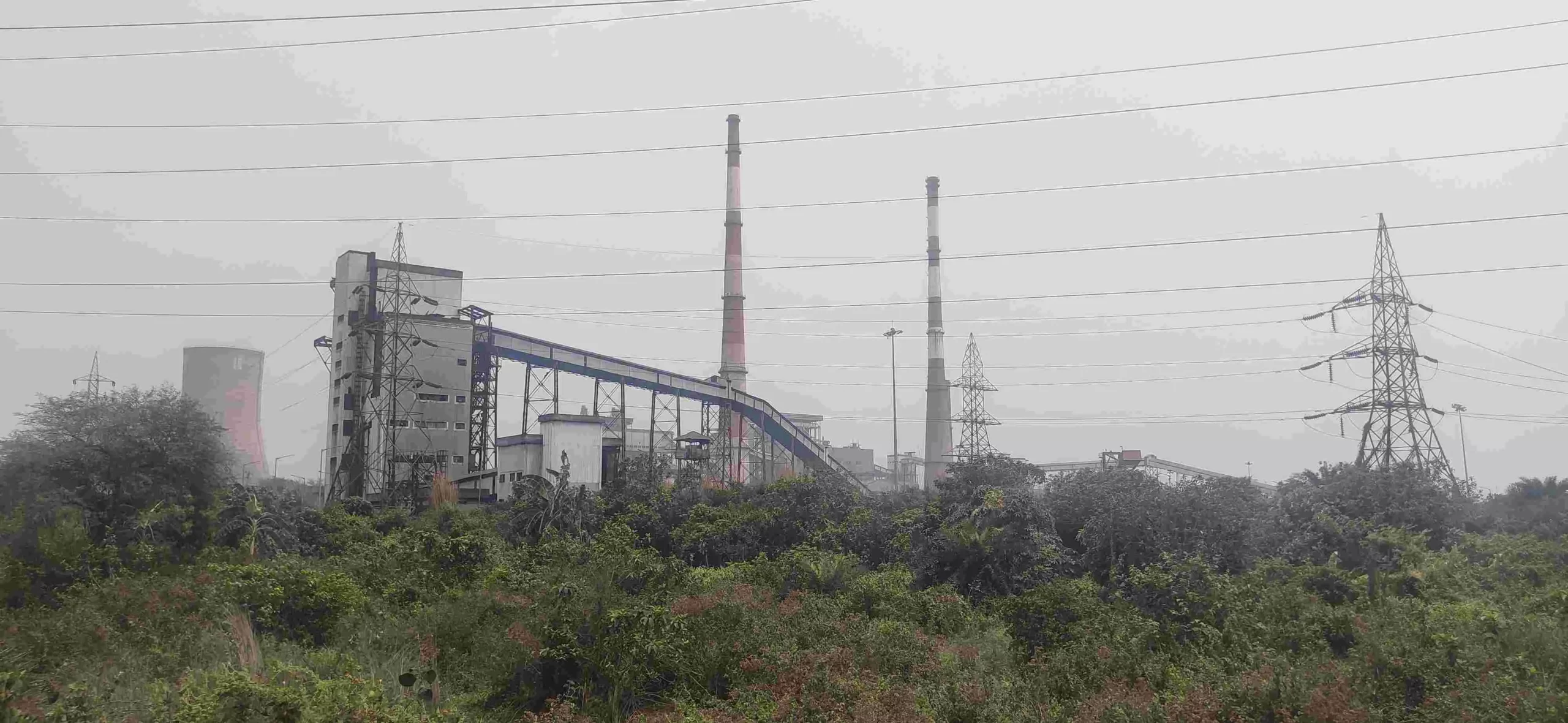Piyala (Paschim Bardhman), West Bengal
Chaitali Gope cannot remember a day, since she gave birth to her son, when she has not despaired about his health.
“My seven-year-old son has been weak ever since his birth. He hardly eats anything and suffers from continuous stomach pain and vomiting,” the 30-year-old resident of Piyala village in West Bengal’s Paschim Bardhaman district told Gaon Connection.
She had consulted numerous doctors who, she said, advised her to migrate to a cleaner environment for better health. “But we have lived here for the past several generations and have our livelihood here,” Gope said.
The worried mother’s house is located barely 100 metres from the coal crusher unit of a thermal power plant owned by The Durgapur Projects Limited (DPL) — a public sector corporation of the Government of West Bengal. This thermal power plant, complain villagers, has ‘blackened’ the lives of over 6,000 villagers of Piyala, about 120 kilometres from the state capital Kolkata. Villagers complain they are forced to eat and breathe black dust, which has affected their health in multiple ways.
“Our lives have become hell but we cannot leave our homes unless we are rehabilitated from here,” Bakul Ghosh, a 50-year-old resident of Piyala, told Gaon Connection.
Watch
Two other neighbouring villages, Kalipur and Waria with a combined population of 3,000 residents, also grapple with the polluting smoke and coal dust emanating from the thermal power plant.
“We eat contaminated food and even our excreta is black. We regularly fall sick and coughing is a common problem here. We have complained to the authorities several times but to no avail,” 34-year-old Shantanu Ghosh from Kalipur village told Gaon Connection.
On April 22, when Gaon Connection visited the Piyala village, almost every nook and cranny of the rural settlement was covered in a layer of black soot from the coal crusher unit of the thermal power plant and villagers said they were fed up with the pollution.
“The area where the DPL plant now stands was built on our agricultural land that was acquired by the state government in the early 1950s and the plant started functioning in 1956. But in 2008, the government started the crushing unit here that has become a source of constant pollution,” Durlav Kumar Majhi, a 60-year-old resident, said. A coal crusher unit is used to reduce the size of the coal blocks for achieving efficient combustion.
“We had protested as we were apprehensive about pollution and diseases. The officials assured us there would be no such problems, but here we are, suffering ever since,” Majhi told Gaon Connection. According to him, they had asked for rehabilitation in other areas, but nothing had happened.

Villagers complain they are forced to eat and breathe black dust emanating from the nearby thermal power plant.
The ‘pollution powerhouse’
According to the official website of The Durgapur Projects Limited, the thermal plant was commissioned 60 years ago, in 1961 — and has a total of eight units, while six of them have been shut down. Generally, coal powered thermal power plants in India are decommissioned after 30-45 years.
“DPL presently has following two units in Power Station with aggregate capacity of 550 MW (1 x 300 MW Unit-7 and other is 1 X 250 MW Unit-8). Unit-7 was synchronised with oil and coal on 24.11.2007 and 29.12.2007 respectively and the commercial operation was declared on 30.4.2008 and Commercial Operation of Unit -8 was 01.10.2014,” the official website mentions.
Officials of the West Bengal Pollution Control Board acknowledged that there was a pollution crisis in the area.
“We have already informed our state officials about the condition in the villages surrounding the DPL and suggested ways to reduce pollution. But we cannot disclose the complete information in public,” an official from the board told Gaon Connection on the condition of anonymity.
“The normal level of PM.5 should be around 12 micrograms per cubic metres but it is around 60 or 70 micrograms per cubic metres (µg/m³) which has devastating health consequences” the official admitted.
Meanwhile, as per the Swiss air quality technology company IQAir, the PM2.5 concentration in Durgapur’s air is 14.3 times above the World Health Organization’s annual air quality guideline value and is gauged as 71.6µg/m³.
The representative of The Durgapur Projects Limited, however, denied most allegations. “DPL’s Unit 7 and Unit 8 are collectively producing 550 MW (megawatts) of power. We have received complaints from locals facing problems due to the coal dust originating from the plant but the matter is under investigation as we want to know whether our plant is causing the pollution,” Swagata Mitra, the public relations officer (PRO) of the state-owned thermal power plant in Durgapur told Gaon Connection.
“We will definitely try to take suitable action if the DPL is found to be the reason behind the pollution,” the PRO added.

In 2008, the government started this crushing unit that has become a source of constant pollution.
Commenting on the six units of the thermal power plant that have been shut down, and two new units added in 2008, Shweta Narayan, global climate & health campaigner with Health Care Without Harm, an international organisation, said that setting up new units within the premises of an old thermal power plant was far from ideal.
“Before setting up new units in an area whose ecology is already polluted, the entire affected area of the power plant needs to be scientifically cleaned up to get rid of the toxicity in the area and the public health in the area needs to be restored,” she explained to Gaon Connection. But according to her, what is happening all over the country is that new units are set up without any sanitising of the environment.
“The argument made by the authorities in such cases is that the new units are technologically advanced and are less polluting. But, the fact of the matter is that the historical pollution burden is still there and continues to poison the environment around it,” Narayan highlighted.
Flyash pollution
“Earlier, the DPL had a fly ash pond where they used to deposit their ash but it got filled beyond capacity and they stopped dumping the ash about eight years ago,” Sudhir Kumar Shukla, a retired employee of Steel Authority of India Limited (SAIL) who lives in the Piyali village, told Gaon Connection. “The pond is now surrounded by wild growth and the fly ash is now released into the water bodies and through chimneys which pollute the environment,” he alleged.
Villagers also allege that the thermal power plant disposes of its fly ash in the nearby water bodies — chiefly in the Tamal river which is a local tributary of the much larger Damodar river.
However, when Gaon Connection approached the public relations officer of the power plant, she stated that the two functional units – Unit 7 and Unit 8 – were complying with the safety measures in disposing off the fly ash.
“We follow the standard mechanism needed for the fly ash disposal,” Swagata Mitra of the Durgapur Thermal Power Station said.
Kolkata-based environmentalist SM Ghosh told Gaon Connection that the pollution level in Durgapur is even more than Kolkata because the industrial belt of the state is Durgapur and its neighbouring Asansol.
“The coal fired thermal power station, DPL, is purchasing low grade coal for power projects which is leading to pollution. Moreover, the town is surrounded by several sponge iron factories. There is also excessive pollution by diesel vehicles and traffic congestion,” said the environmentalist.
“Massive deforestation coupled with wastes from the industry has been taking a toll on human lives,” he added.

Women in the area have decided to boycott the upcoming municipal elections.
Women to boycott upcoming municipal polls
Meanwhile, the women in the area have decided to boycott the upcoming municipal elections whose dates are to be announced soon.
“We will not allow any candidate to campaign in our village and also dissuade people from casting their votes. We will conduct a door-to-door awareness programme to create a mass campaign to raise this issue of pollution,” Kabita Majhi, a resident of Piyali, told Gaon Connection.
Responding to the possibility of the people boycotting the municipal elections, Amitava Banerjee, a local Bharatiya Janata Party leader blamed it on the ruling Trinamool Congress Party government.
“The DPL and other industries are causing massive pollution in Durgapur but no action has been taken yet. Thick layers of pollutants can be seen on trees. The pollution control board and the government have taken no action despite several protests made by our party,” Banerjee told Gaon Connection.
With inputs from Pratyaksh Srivastava.




















